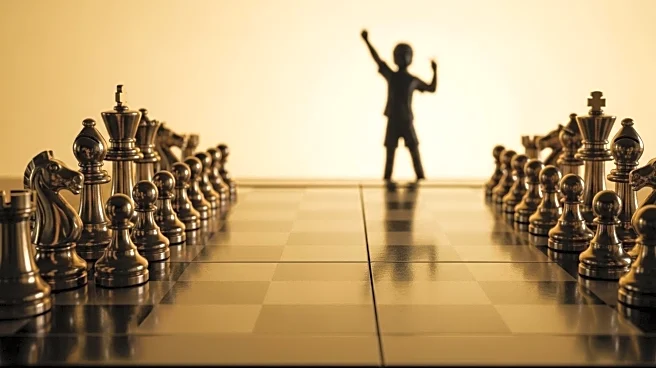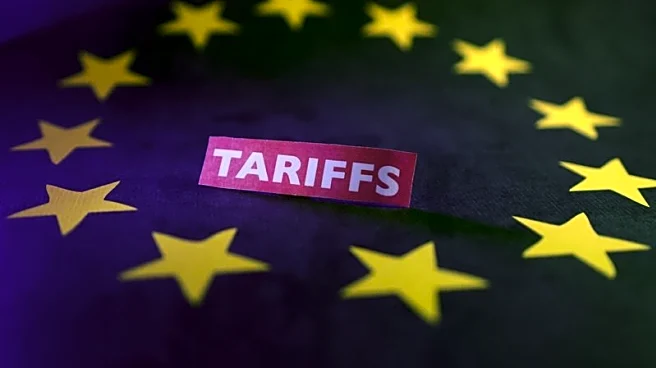What's Happening?
Yagiz Kaan Erdogmus, a 14-year-old chess prodigy from Turkey, achieved a remarkable victory at the Grand Swiss tournament in Samarkand, Uzbekistan. Known as the 'Turkish Immortal,' Erdogmus executed a brilliant game against India's Mittal Aditya, allowing two white queens on the board before sacrificing his black queen for a pawn, leading to a checkmate with a previously unmoved black pawn. This game has been compared to Bobby Fischer's famous 'Game of the Century.' The Grand Swiss tournament, part of the qualification process for the 2026 Candidates Tournament, features top players from around the world, including reigning world champion Gukesh Dommaraju, who has faced a challenging tournament.
Why It's Important?
Erdogmus's victory highlights the emergence of young talent in the chess world, challenging established players and potentially reshaping the competitive landscape. His performance, alongside other young players like Abhimanyu Mishra, who set a record by defeating a reigning world champion, underscores a generational shift in chess. This could influence future tournaments and the strategies of seasoned players. The success of young players may also inspire increased interest and investment in chess training and development programs globally.
What's Next?
As the Grand Swiss tournament progresses, Erdogmus and other young players will continue to compete for a spot in the 2026 Candidates Tournament. Their performances could lead to further opportunities and sponsorships. Established players may need to adapt their strategies to counter the innovative approaches of these rising stars. The chess community will be watching closely to see if Erdogmus and his peers can maintain their momentum and challenge for top positions in future tournaments.
Beyond the Headlines
Erdogmus's success raises questions about the role of technology and training in developing young chess talent. The use of advanced software and online platforms has democratized access to high-level chess education, allowing young players to compete at elite levels earlier in their careers. This trend may lead to a reevaluation of traditional training methods and the importance of early exposure to competitive play.













